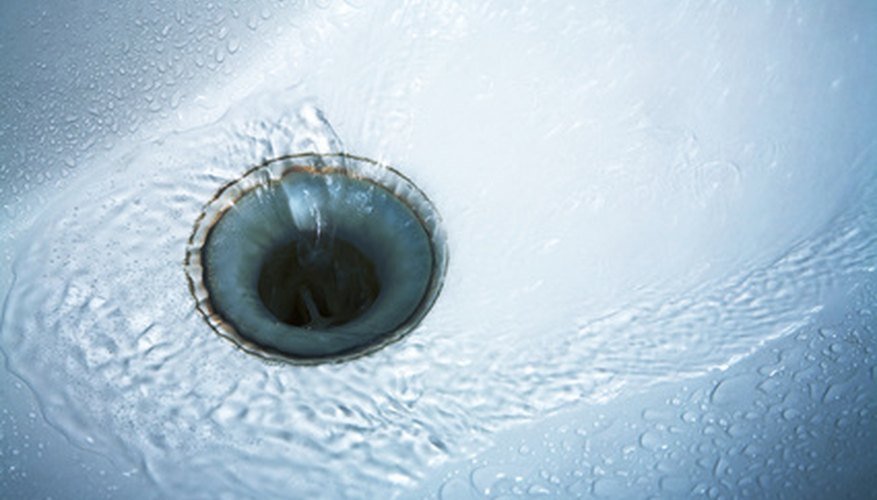Nobody likes the nasty odours and slow drainage caused by sludge build-up in drain pipes. Calling a plumber each time the drain slows down is costly, time-consuming and inconvenient. You have several options before bringing in a professional. You may have to try one or more tactics to get a smooth-flowing drain, but the result will be worth the effort.
Pour a gallon of boiling water down the drain to loosen the sludge and build-up.
- Nobody likes the nasty odours and slow drainage caused by sludge build-up in drain pipes.
- Pour a gallon of boiling water down the drain to loosen the sludge and build-up.
Fill the sink or tub with two inches of warm water. If this is a bathroom sink, hold a wet rag over the overflow holes, which are located under the near rim of the sink. Using a toilet plunger placed over the drain, forcefully press down or plunge five or six times. The water forced through the drain should clear out clogs and build-up.
Dump 1 cup of baking soda into the drain. Follow this with 1 cup of white vinegar. The resultant harmless chemical reaction will cause a foaming action that will break down the sludge in your drain. After about 30 minutes, flush the drain with boiling water.
Pour a cup of bleach down the drain. Let it sit overnight as it dissolves the sludge and build-up. Rinse well the next morning with hot water. Ventilate the area as well as you can to minimise bleach fumes.
- Dump 1 cup of baking soda into the drain.
- Pour a cup of bleach down the drain.
Contact a plumber if none of the household approaches are effective.
TIP
To avoid future build-up, fill all tubs and sinks in the house once every three months. With help from others, open all the drains and flush all the toilets at one time. The massive flow of water should remove clogs and sludge along the entire plumbing line.
WARNING
Bleach is a powerful agent that may discolour stainless steel and other surfaces. Wipe away any spots immediately. Try not to touch or inhale the bleach, as it may cause headaches and burning.
